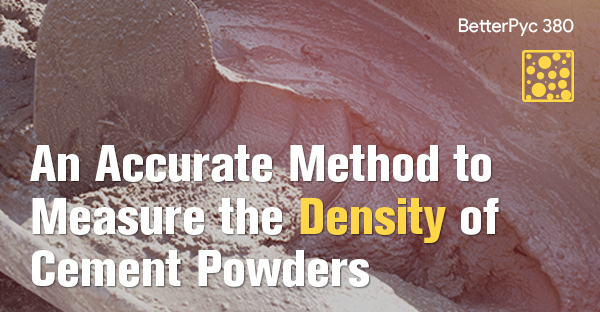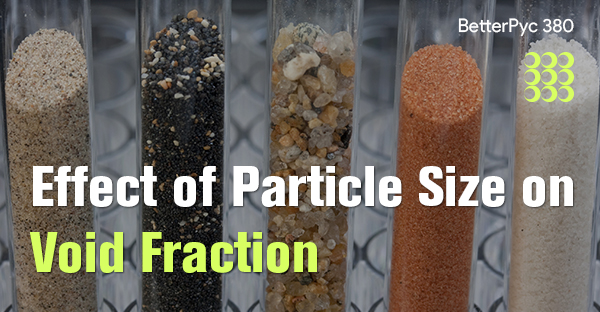建築材料
より優れたサイズの粒子サイズおよび形状分析機器は、あらゆる種類の鉱山および鉱物の研究、製造、応用に広く使用され、有利な利益をもたらしています。
Bettersize 粒度および形状分析装置および粉末特性試験機は、鉱山および鉱物の深部加工のための完全な物性分析と粒度分析を提供し、粒度分布、粒子形状、流動性、タップ密度、嵩密度などのデータを提供することで、鉱物加工のコストを削減し、製品の正しい粒子グレードを制御するのに役立ちます。
研磨剤、ホタル石、ガリウム、マイカ、ソーダ灰、アンチモン、ガーネット、モリブデン、ヒ素、ニッケル、ストロンチウム、アスベスト、ゲルマニウム、ニオブ、硫黄、重晶石、金、タルク、ボーキサイト、黒鉛、タンタル、ベリリウム、石膏、パーライト、テルル、ビスマス、ハフニウム、リン鉱石、タリウム、ホウ素、プラチナ、トリウム、臭素、インジウム、カリ、錫、カドミウム、ヨウ素、軽石、チタン、セメント、鉄鋼、水晶、タングステン、セシウム、鉄鉱石、レアアース、バナジウム、クロム、酸化鉄顔料、レニウム、バーミキュライト、粘土、カイヤナイト、ルビジウム、珪灰石、コバルト、鉛、イットリウム、銅、石灰、砂、ゼオライト、ダイヤモンド、リチウム、スカンジウム、亜鉛、珪藻土、マグネシウム、セレン、ジルコニウム、長石、マンガン、シリコンはすべて採掘され、鉱石から抽出される材料です。 採掘される場合、有用な鉱物の抽出における粒度分布測定は困難であり、技術的にも要求が厳しいものとなります。 鉱石は発破または切断され、二次破砕および粉砕のために工場に運ばれ、目的の用途に合わせて材料が準備されます。
粉砕
多くの場合、貴重な鉱物は脈石と混合しているため、鉱石を分離する必要があります。 多くの分離プロセスの最初のステップは粉砕 (サイズの縮小) であり、その後、さらなる粉砕または次のステップである鉱石の濃縮のための分級 (粒子サイズによる分離) が続きます。 粉砕中、各粒子が主に 1 つの鉱物で構成されるように、粒子が十分に小さくなるように鉱石を粉砕する必要があります。 次に、これらの粒子を分離して鉱物製品を濃縮します。
重力分離
重力分離は、物質の質量の違いに基づいて鉱物を分離します。 方法には、治具、水門、スパイラル、振動台、微粒子分離器、ハイドロサイザーおよびサイクロンが含まれます。 重力分離は重量のみに基づく分離であり、体積は重量に比例するため、粒子サイズに直接影響されます。
ジギングでは、パルス水流または同様のプロセスを使用して地面の材料を押し上げます。 重く大きな粒子はパルス間でより速く沈むため、ジグの底に沈む傾向があります。 したがって、サイズではなく密度によって確実に分離するには、均一な粒子サイズが重要です。 さらに、治具の操作 (水パルスの長さ) と設計は、分離される粒子のサイズによって異なります。 水門とスパイラルは、粒子を分離するために粘性抵抗と浮力の差に依存します。 この違いは粒子サイズに直接関係します。 重力テーブルは振動プラットフォームを使用して粒子サイズと比重によって分離します。 したがって、狭いサイズ分布のフィードはより良好な分離をもたらします。
泡浮選
ここでは、材料は界面化学によって分離されます。 スラリーまたは懸濁液中を流れる気泡は、疎水性表面を持つ粒子に付着する傾向があり、粒子が泡の上に浮いて回収されます。 多くの場合、粒子表面は選択的に修飾され、鉱物表面は疎水性になり、脈石表面は親水性になります。 粒子サイズはプロセス効率にとって重要です。 過度に微細な粒子は、表面化学に関係なく気泡の流れに混入する可能性があり、分離効率の有効性が低下します。 粒子が大きすぎると、気泡の付着に関係なく沈む傾向があります。
静電分離と磁気分離
静電場または磁場下での粒子の挙動を利用して、粒子を種類ごとに分離できます。 これらの場は電荷 (または磁気) を誘発します。 結果として生じる力により、パーティクルはパーティクルの質量に応じて移動します。 したがって、小さな粒子は大きな粒子よりも遠くに移動します。 さらに、粒子の電荷は表面現象であり、微粒子の表面積が大きいほど、より高い電荷を有する傾向があります。 これらのサイズの影響により、組成ではなくサイズによる分離が生じる可能性があります。 したがって、狭いサイズ分布は多くの場合、より良好な分離につながるが、常にそうであるとは限らない。
製品の発送
多くの場合、最終製品は等級付けされ、そのまま、またはさらなる加工のために販売されます。 ユーザーは、プロセスを確実に最適化するために、特定の粒子サイズ範囲を必要とします。 したがって、製品を販売するという非常に重要なステップにおいて、多くの鉱山では粒子サイズを制御し、場合によっては粒子の形状も重要です。
以下の粒度測定システムは、サイズと形状を測定する機能を備えており、ユーザーが製造プロセス全体を通じて最適なサイズを取得できるように支援します。
Citations
- Bettersizer 2600
Functional redundancy as an indicator for evaluating functional diversity of macrobenthos under the mussel raft farm near Gouqi Island
DOI: 10.1016/j.aquaculture.2023.740024 Read ArticleZhejiang Ocean University | 2024Biological traits analysis (BTA) helps to evaluate the effects of different environmental variables on the traits-based functional composition of macrobenthos. However, research on functional traits of macrobenthos under mussel farming is limited. We investigated the spatial and temporal response of the benthic system in terms of taxonomic and functional diversity to environmental variables of farming and natural stressors resulting from suspended mussel farming near Gouqi Island of eastern China Sea. The functional traits of macrobenthic assemblages under mussel farming were characterized by “medium adult body size”, “vermiform body form”, “high flexibility”, “infauna”, “semi-motile”, “gonochoristic”, “surface deposit-feeders”, “carnivores”, “semi-motile burrowers”, and “tube-dwellers”. Functional redundancy was stable in response to mussel farming stresses among seasons, whereas species diversity showed efficient to evaluate natural variables. Functional diversity was significantly affected by farming stressors rather than natural variables, Further analysis using multivariate methods together with continuous monitoring were highlighted to evaluate the impacts of mussel farming. Our results reinforce the importance of macrobenthic species and functional traits analysis to evaluate human stresses driven impacts in offshore ecosystems. By analysing the environmental variables with different sources, independently, we concluded the main effects of human pressures on macrobenthic community. Such distinction could be particularly effective to isolate variable environmental descriptors and evaluate their effects on functional diversity, making the current approach promising for the evaluation of ecological effects of anthropogenic stressors in aquaculture areas. - Bettersizer 2600
Degradation characteristics and utilization strategies of a covalent bonded resin-based solid amine during capturing CO2 from flue gas
DOI: 10.1016/j.seppur.2023.125621 Read ArticleChina University of Petroleum | 2024In this study, various types of degradation as well as attrition which are possibly encountered in a circulating fluidized bed temperature swing adsorption (CFB-TSA) process, were conducted experimentally to evaluate the stability of a resin-based solid amine sorbent. Other characterizations methods, such as elemental analysis (EA), Fourier transform infrared spectroscopy (FTIR) etc. were applied to further reveal the degradation mechanisms. The results showed that thermal degradation occurs from 140–160 °C due to the decomposition of amine group. The CO2-induced degradation occurs from a higher temperature of 160–180 °C accompanied by the production of urea. Hydrothermal stability is good below 130 °C, but the ionic impurities in steam crystalized on particle surface can accelerate the degradation. Oxidative degradation is the most harmful, which starts at a lower temperature of 70–80 °C with the formation of aldehyde. The existence of H2O in atmosphere can alleviate the oxidative and CO2-induced degradations. The employed sorbent has a very low attrition index of 0.05, which is 1–2 orders lower than typical commercial fluidized bed catalysts. Based on the results of stability evaluation, some design suggestions for proper utilization of this sorbent or other similar resin-based sorbents have been provided in an industrial CFB-TSA process.
- Bettersizer 2600
De-branching of starch molecules enhanced the complexation with chitosan and its potential utilization for delivering hydrophobic compounds
DOI: 10.1016/j.foodhyd.2023.109498 Read ArticleShihezi University | 2024The current study aimed to prepare the complexes between debranched-waxy corn starch and chitosan polymers (DBS-CS), and then investigated their corresponding structural characteristics, rheological property and potent application in Pickering emulsion. The results indicated that the existence of chitosan significantly inhibited starch short-range molecular rearrangement for all DBS-CS samples, which was manipulated by both debranching treatment and chitosan content. Interestingly, this is the first study to reveal that the outstanding peak at 1.8 ppm in 1H NMR spectrum for sample DBS-CS was gradually shifted towards a lower-field region following an increased chitosan content. Moreover, the debranching treatment shifted the crystallinity pattern from A-type to B-type and the relative crystallinity of DBS-CS decreased gradually with the increased content of CS. All samples had a pseudoplastic fluid and shear-thinning behavior with an enhanced shear resistance following the complexation. The DBS-CS was applied in a Pickering emulsion for showing a greater emulsifying stability and a lower gel strength than native NS-CS prepared emulsion. Importantly, the encapsulation ability of curcumin in the DBS-CS emulsion was significantly improved, followed by an increase of 15.45% for its corresponding bioavailability compared to the control. Therefore, this study might highlight a potential carrier for delivering the bioactive substances in a green pattern. - Bettersizer 2600
Heat-induced aggregation behavior of wheat gluten after adding citrus pectin with different esterification degree
DOI: 10.1016/j.foodhyd.2023.109420 Read ArticleGansu Agricultural University | 2024Wheat gluten aggregation during heat treatment is beneficial to the final quality of gluten-based products. Exogenous pectin can affect gluten aggregation. However, the effect of pectin with different degrees of esterification on the heat-induced aggregation behavior of gluten and its possible mechanism are still unclear. Thus, the heat-induced aggregation behavior of gluten after adding pectin with different esterification degree was studied in this study. When the temperature was raised from 25 °C to 95 °C, pectin affected gluten aggregation and was related to the degree of esterification. Specifically, the results of rheological properties and particle size indicated that low-ester pectin improved the viscoelasticity of gluten and promoted gluten aggregation. Thermal properties revealed that enthalpy of gluten added with low-ester pectin (37%) increased from 92.96 J/g to 95.40 J/g during heating process. Structurally, the fluorescence intensity and surface hydrophobicity of gluten added with low-ester pectin (37%) were lower than those added with high-ester pectin (73%). In addition, low-ester pectin (37%) significantly increased the disulfide bond content (from 15.31 μmol/g to 18.06 μmol/g) and maintained β-sheet content of gluten compared with gluten alone at 95 °C, indicating that low-ester pectin was more likely to induce gluten aggregation. However, scanning electron microscope showed that the gluten added with low-ester pectin (46%) exhibited a denser network structure at 95 °C than that added with low-ester pectin (37%). These results will provide a theoretical base for the regulation of gluten aggregation and the quality of gluten-based products by pectin with different esterification degree.
- 1
- 2
- 3
- 4
- 5
- 6
- 84




